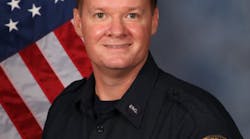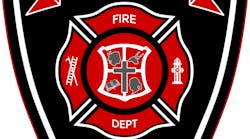Editor’s note: The National Institute for Occupational Safety and Health (NIOSH) Firefighter Fatality Investigation and Prevention Program conducts investigations of firefighter line-of-duty deaths to formulate recommendations for preventing future deaths and injuries. The program does not seek to determine fault or place blame on fire departments or individual firefighters, but to learn from these tragic events and prevent future similar events. NIOSH is a unit of the U.S. Centers for Disease Control and Prevention (CDC).
Firehouse® Magazine is pleased to join with NIOSH in presenting this valuable information. It is important to note that while some incidents that will be described here occurred several years ago, the information presented is valuable today. The accounts that follow are summaries of NIOSH investigations. The complete reports are available on the program website at www.cdc.gov/niosh/firehome.html.
SUMMARY
On Jan. 10, 1999, three firefighters became trapped when the second floor of a nightclub collapsed during an interior fire attack. One male firefighter (the victim) died and two other firefighters were injured as they battled the late-morning blaze. Arriving on the scene of a two-story taxpayer building (commercial occupancy on the first floor and living quarters on the second), firefighters reported heavy smoke emitting from the second-floor windows and eaves with fire showing in a secondary front doorway that led to the second-floor. The fire quickly spread up the walls of the first floor to an area above the false ceiling over the first floor. The fire also spread up the walls to the attic area above the second floor.
As firefighters prepared entry through the main front door, other firefighters began applying water to the fire that was emitting through a secondary front door that led to the second floor. Gaining entry through the main front door, two firefighters from Engines 2550 (a captain and a firefighter) and three firefighters from Engine 2552 (one lieutenant, who was injured; an engineer; and a firefighter, the victim) advanced two 1½-inch charged lines and began applying water to the fire. Upon entering the smoke-filled structure, they noticed that the drywall drop ceiling was down in some areas, and they could see fire going up the walls and across the ceiling.
As the firefighters from Engine 2552 advanced their line, the engineer was struck in the head by falling debris that knocked off his helmet and he was forced to exit. Minutes later, a third firefighter from Engine 2550 joined his crew inside the structure. A firefighter (injured) from Engine 2552 also entered at the same time, relieving the victim on his line. The captain on Engine 2550 stated that as he continuously surveyed the interior conditions, it had appeared to him there had been a partial roof collapse (referring to the second floor as the roof). He then exited the structure and went to the command post to give the incident commander (IC) a report on the interior conditions, explaining that he felt there had been partial roof collapse (second-floor). Before the IC could make any changes, the captain returned to the interior of the structure to find his crew. Just as he located his crew, the second floor collapsed, trapping the three firefighters from Engine 2552. The captain of Engine 2550 and his crew escaped without injury. The rescue team quickly freed one firefighter and had to use hydraulic jacks, airbags and cribbing to free the lieutenant and the victim. All three firefighters were transported to a local hospital, where the victim was pronounced dead.
CAUSE OF DEATH
According to the medical examiner, the cause of death was listed as traumatic asphyxiation.
RECOMMENDATIONS
- Fire departments should use extreme caution and recognize potential hazards that could exist when fighting a fire in a balloon-frame structure.
SUMMARY
On Jan. 9, 2001, a 48-year-old male volunteer firefighter (the victim) was struck by a motor vehicle while directing traffic. The victim and Firefighter 1 had responded in Rescue Truck 66 at 4:42 P.M. to a call for a non-injury, motor vehicle crash involving downed power lines. Assistant Chief 1 called for fire police to block the southbound lane of traffic coming from the north of the motor-vehicle crash, and for another crew to block the northbound traffic coming from the south of the motor-vehicle crash. At 4:54, the victim and Firefighter 1 arrived at the intersection north of the motor-vehicle crash and positioned Rescue Truck 66 just south of the intersection with the apparatus facing north. With the emergency lights activated, Firefighter 1 and the victim stood near Rescue Truck 66, directing traffic. At approximately 5:20, a civilian driver heading west stopped at the intersection and signaled to make a left turn (south). The victim walked over to inform the driver that the road was closed. At 5:22, the victim stepped back away from the driver’s window when a pickup truck traveling eastbound struck him. The victim was thrown under a pickup truck stopped in the westbound traffic lane. He was transported to a local hospital and later transferred to the regional trauma center. He died the following day at 3:23 A.M.
CAUSE OF DEATH
The death certificate lists the cause of death as multiple injuries consisting of a massive closed head injury, pulmonary contusion and chest injury.
RECOMMENDATIONS
- Fire departments should establish, implement and enforce standard operating procedures (SOPs) regarding emergency operations for highway incidents.
SUMMARY
On April 6, 1999, two male volunteer firefighters (the victims), 28 and 30 years old, died while trying to escape a wildland fire burning in hardwood leaf litter. The victims were part of a 10-person, initial-attack firefighting crew from a local volunteer fire department. After the crew arrived at the fire scene, at about 4:47 P.M., the command post was established. The incident commander (IC) directed the crew to put on wildland personal protective equipment and then designated a crew leader (CL) to oversee line construction operations. A plan of attack was discussed and the CL, along with six firefighters, walked into the forest adjacent to a natural water drain (hollow) where the fire was burning.
The CL and firefighters began clearing vegetation, creating a fire line at the fire site which consisted of two to three acres of hardwood litter under a dormant hardwood overstory. The fire line was being established on the left flank of the hollow adjacent to the fire. Creating the fire line, the firefighters formed a single-file line with the two victims leading. The two victims were using a rake and leaf blower to clear the fire line. As the fire line was being constructed, several spot fires were breaking over the line, and various members of the crew, except the victims, doubled back and reconstructed the fire line.
As the fire grew in intensity and spot fires continued to break over the fire line, the two victims became separated from the rest of the crew. The fire, still growing in intensity, moved rapidly up the hollow, and the CL gave the order, by radio, to pull back. One of the victims, equipped with a radio, acknowledged the order and indicated that he and the other victim would pull back. Shortly thereafter, at around 5:25, the same victim radioed that they had both been burned. This was the last radio transmission heard from the victims. Evidence at the incident site suggests that as the fire began to grow in intensity and move up the hollow, the victims tried to run up the hollow ahead of the fire. As the victims ran farther up the hollow, the terrain became steep (approximately a 45-degree slope). The fire continued to intensify due to gusting winds and the chimney effect created by the terrain in the hollow. The victims’ bodies were later found about 100 yards from the top of the ridge, where they were pronounced dead.
CAUSE OF DEATH
The cause of death for both victims was listed by the coroner as asphyxia due to environmental oxygen deprivation, smoke inhalation and acute carbon monoxide poisoning.
RECOMMENDATIONS
- Fire departments should provide firefighters with wildland personal protective equipment that is National Fire Protection Association n (NFPA) 1997 compliant and monitor to ensure its use.
- Fire departments should equip firefighters with approved fire shelters and provide training on the proper deployment of the fire shelter at least annually with periodic refresher courses during the year.
- Fire departments should utilize National Weather Service (NWS) Fire WX Forecasters for all fire weather predictions and immediately share with all personnel all information about significant fire behavior events (e.g., long-range spotting, torching, spotting and fire whirls).
- Fire departments should learn, communicate and follow the 10 standard fire orders as developed by the National Wildfire Coordinating Group (NWCG).







